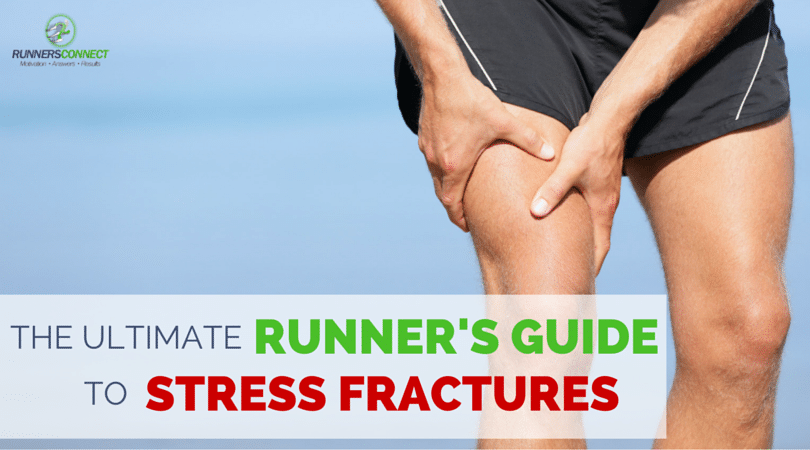To reduce the bones weight-bearing load until healing occurs you might need to wear a walking boot or brace. In addition to the RICE protocol and anti-inflammatory medication your doctor may recommend that you use crutches to keep weight off your foot until the pain subsides.
 The Ultimate Runner S Guide To Stress Fractures
The Ultimate Runner S Guide To Stress Fractures
Treatments your doctor may recommend can include.
Stress fracture treatment. In addition to avoiding certain activities the RICE method is recommended. Physical therapy to increase muscle strength and flexibility may be. Lowerrisk stress fractures can be initially treated by reducing loading on the injured bone through a reduction in activity or by substituting other activities.
Treatment for a suspected or confirmed stress fracture will involve rest or a change in athletic activity thats sufficient enough to allow for healing. Theyve treated stress fractures in the past and know the best course of recovery for you. The most important principle in treating any stress fracture is to employ rest and weight-bearing restriction for as long as needed to allow the symptoms to resolve 12.
If you start a new exercise program for example you might develop stress fractures if you do too much too soon. Your doctor will discuss your options based on the location and severity of your fracture. Other recommendations for nonsurgical treatment may include.
Rest is the key to the initial treatment of a stress fracture. Time to bony union. Treatment of stress fractures consists of activity modification including the use of nonweight-bearing crutches if needed for pain relief.
Although the reported incidence of stress fractures in the general athletic population is less than 1 the incidence in runners may be as high as 20. These are distinguished by anatomical location and whether the bone is loaded in tension high risk or compression lower risk. Stress fractures are treated in several ways.
Running and Stress Fractures Dont mess around with a stress fracture. In order for a foot stress fracture to heal most physicians will advise athletes to stop or modify activities that cause pain. Therefore high-risk stress fractures require aggressive treatment.
This should allow the person to remove the source of the stress to the bone maintain fitness promote a safe return to activity and permit full healing. Stress fractures happen because of repetitive stress and overuse so. The majority of stress fractures are treated non-surgically and most athletes are able to return to normal activity within 2 to 8 weeks.
That which you set in your own body includes a fantastic effect regarding how youll mend. Stress fractures Diagnosis. Immobilization in a walking cast or hard-soled shoe may be prescribed for a few weeks depending on the degree of fracture and symptoms.
Stress fractures are common injuries frequently seen in athletes and military recruits. Also your provider will aim to treat any risk factors you have for future injuries. Stopping the activity that is causing pain.
Its not the type of injury that you can run through. Doctors can sometimes diagnose a stress fracture from a medical history and a physical exam but imaging. Treatment involves first determining if the stress fracture is of higher or lower risk.
Nonsurgical Treatment Options. Certainly one of the. Healing time may be 4-12 weeks depending upon the bone involved before gradual increases in activity may be resumed.
You might not think of exercise as a way to heal quickly but moderate exercise that keeps. Tibial stress fractures also known as fatigue fractures are generally uncomplicated and respond well to conservative treatment. Better the flow of blood equals far better therapeutic for their own bones.
Rest anti-inflammatories stretching and muscle strengthening are recommended treatments. Once a stress fracture is suspected a cyclic management programme should be initiated. Its serious and could get worse if you continue to keep running.
A walking boot or brace along with a cast or crutches may be needed to help rest the injured area and limit the amount of weight bearing allowed. Stress fractures are most common in the weight-bearing bones of the lower leg and foot. Many aspects of the management of stress fractures are heterogeneous across all anatomical areas and these include activity modification or stopping the causative stressor pain control avoiding non-steroidal anti-inflammatories 11 smoking cessation if applicable and occasionally wearing foot orthoses to reduce load through the affected limb.
Finally to heal a stress fracture faster you should get some moderate exercise. How is a stress fracture treated. Analgesics are appropriate to relieve pain and pneumatic.
Treatment will vary depending on the location of the stress fracture and its severity. The majority of stress fractures are treated nonsurgically. Lifestyle and home remedies.
Failure to follow your doctors treatment plan could result in significantly longer healing time. Track and field athletes and military recruits who carry heavy packs over long distances are at highest risk but anyone can sustain a stress fracture. Whats a Stress Fracture and treatment.
Most stress fractures can be treated conservatively by having patients stop or significantly decrease their activity for approximately 4-6 weeks then gradually return to activity.
